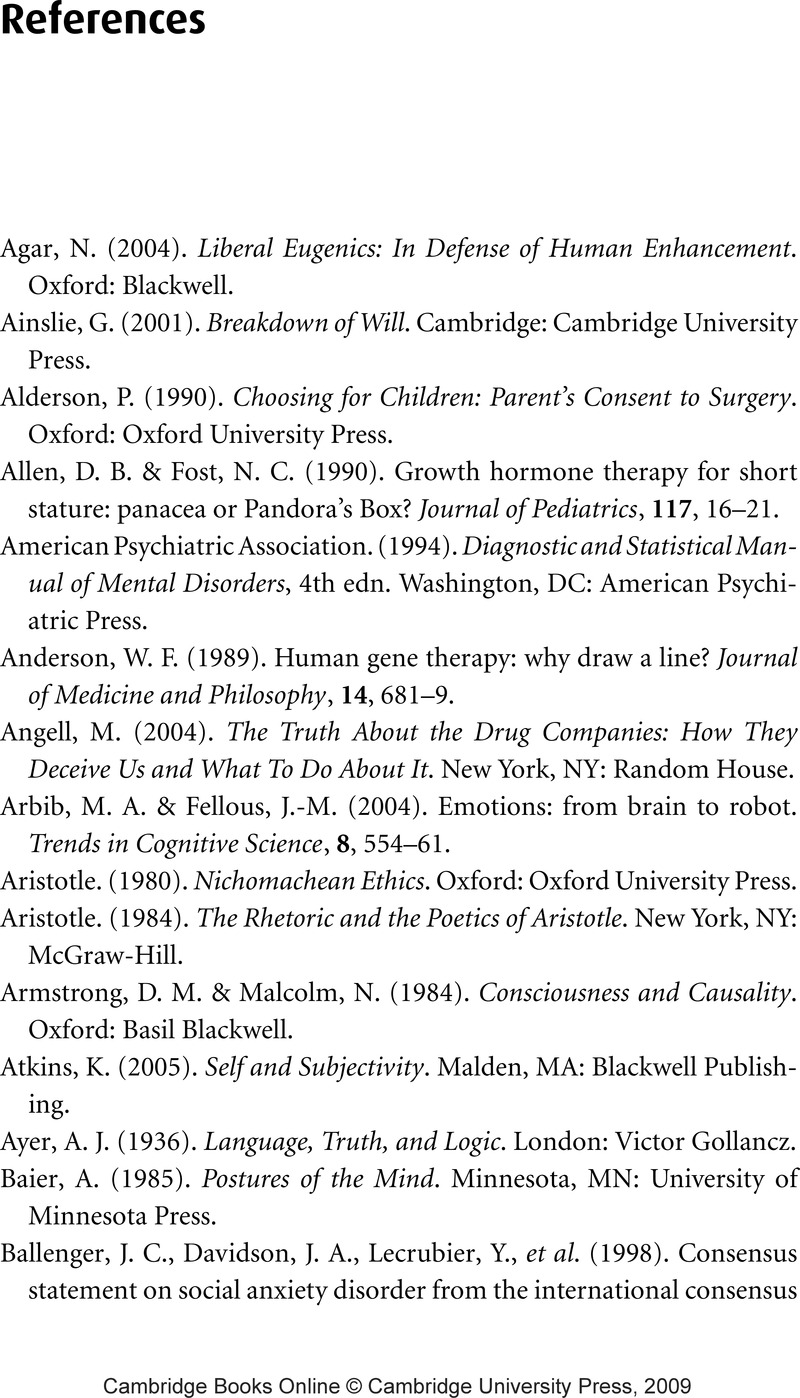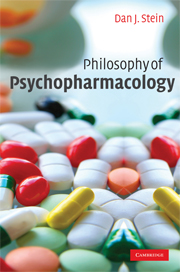Book contents
- Frontmatter
- Contents
- Preface
- 1 Psychopharmacology – a remarkable development
- 2 Philosophical questions raised by psychopharmacology
- 3 How to think about science, language, and medicine: classical, critical, and integrated perspectives
- 4 Conceptual questions about psychotropics
- 5 Explanatory questions about psychotropics
- 6 Moral questions about psychotropics
- 7 Conclusion
- References
- Index
- References
References
Published online by Cambridge University Press: 13 August 2009
- Frontmatter
- Contents
- Preface
- 1 Psychopharmacology – a remarkable development
- 2 Philosophical questions raised by psychopharmacology
- 3 How to think about science, language, and medicine: classical, critical, and integrated perspectives
- 4 Conceptual questions about psychotropics
- 5 Explanatory questions about psychotropics
- 6 Moral questions about psychotropics
- 7 Conclusion
- References
- Index
- References
Summary

- Type
- Chapter
- Information
- Philosophy of Psychopharmacology , pp. 141 - 200Publisher: Cambridge University PressPrint publication year: 2008



